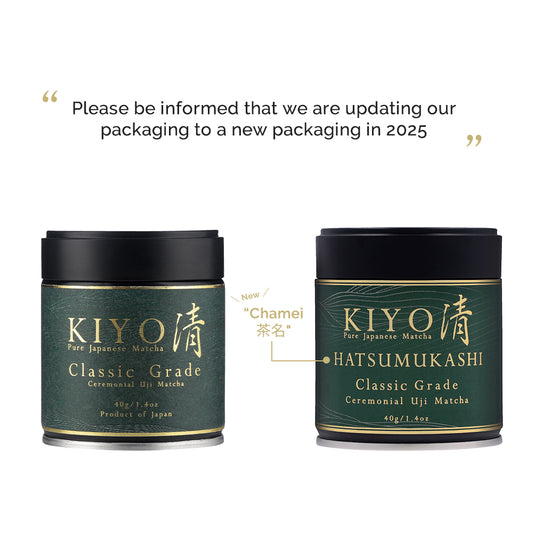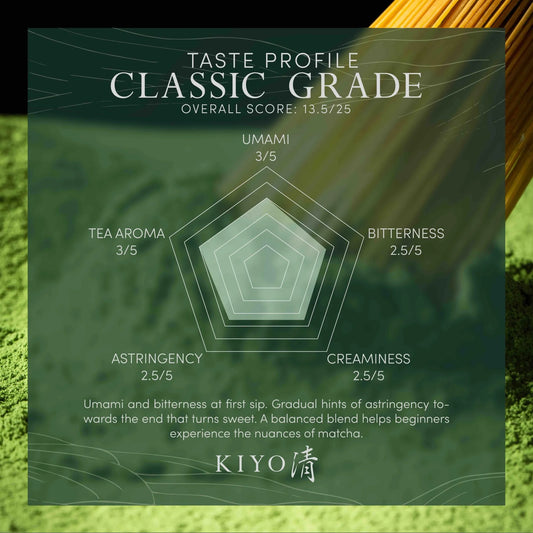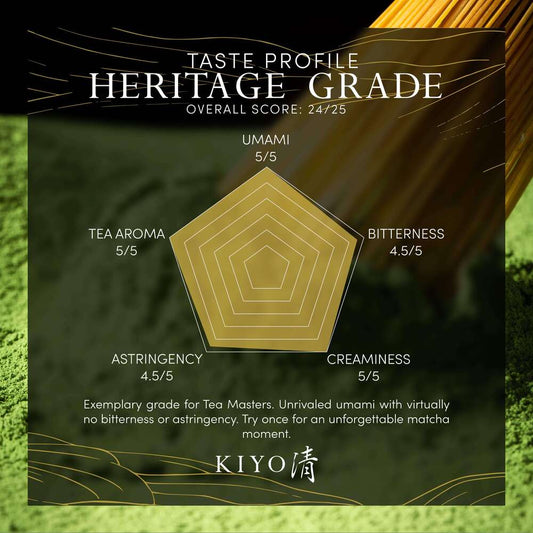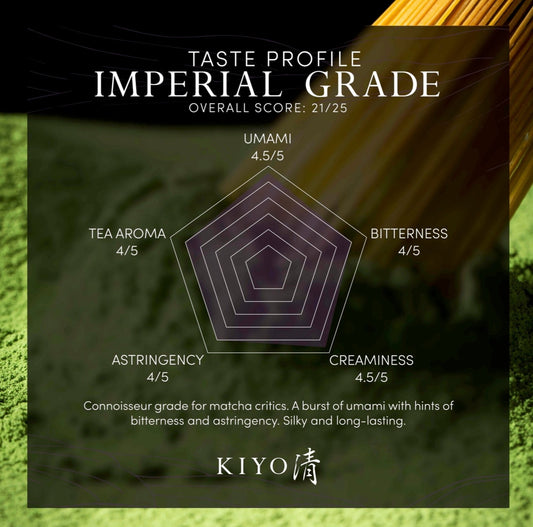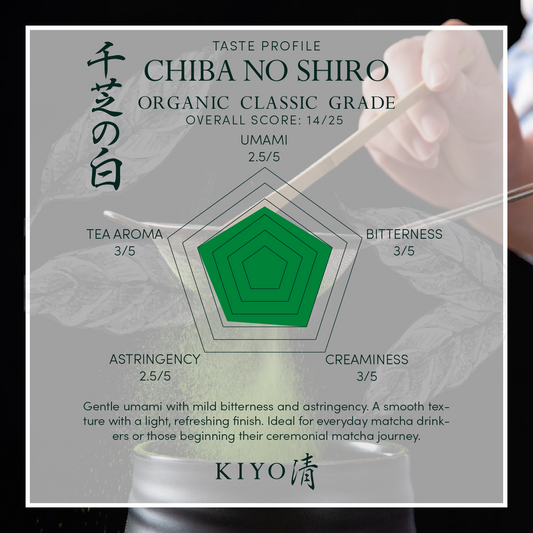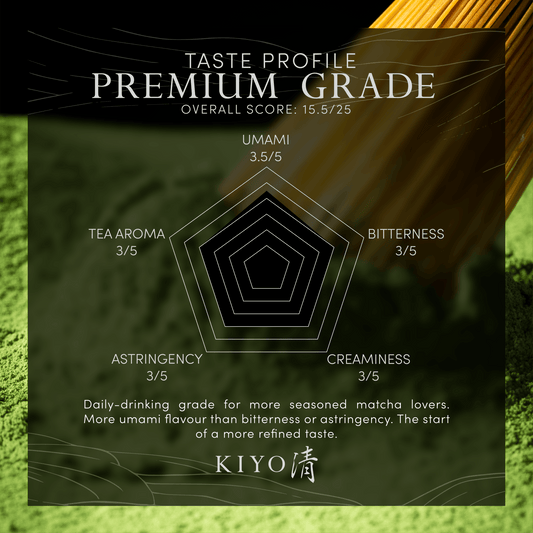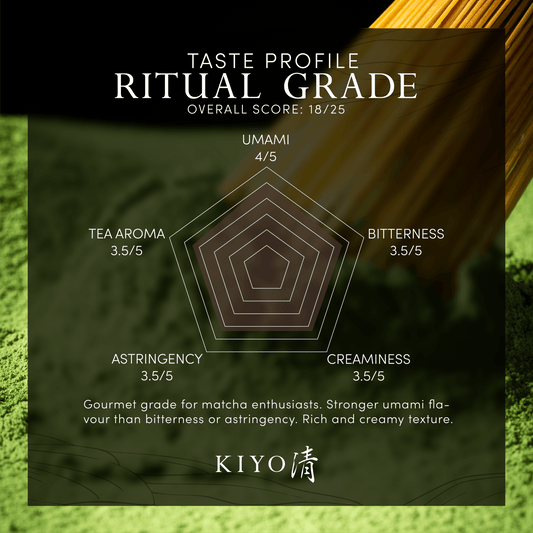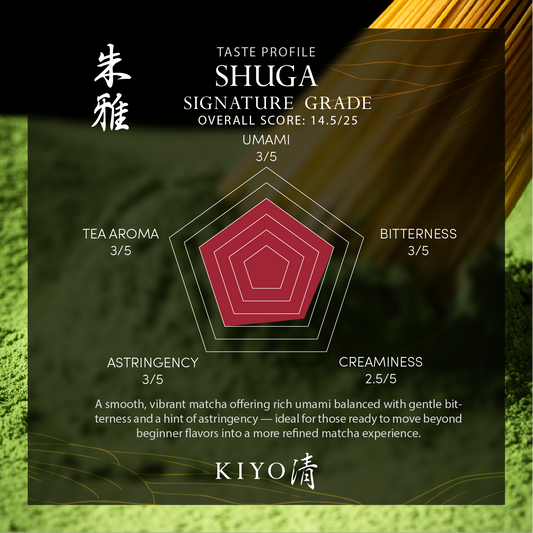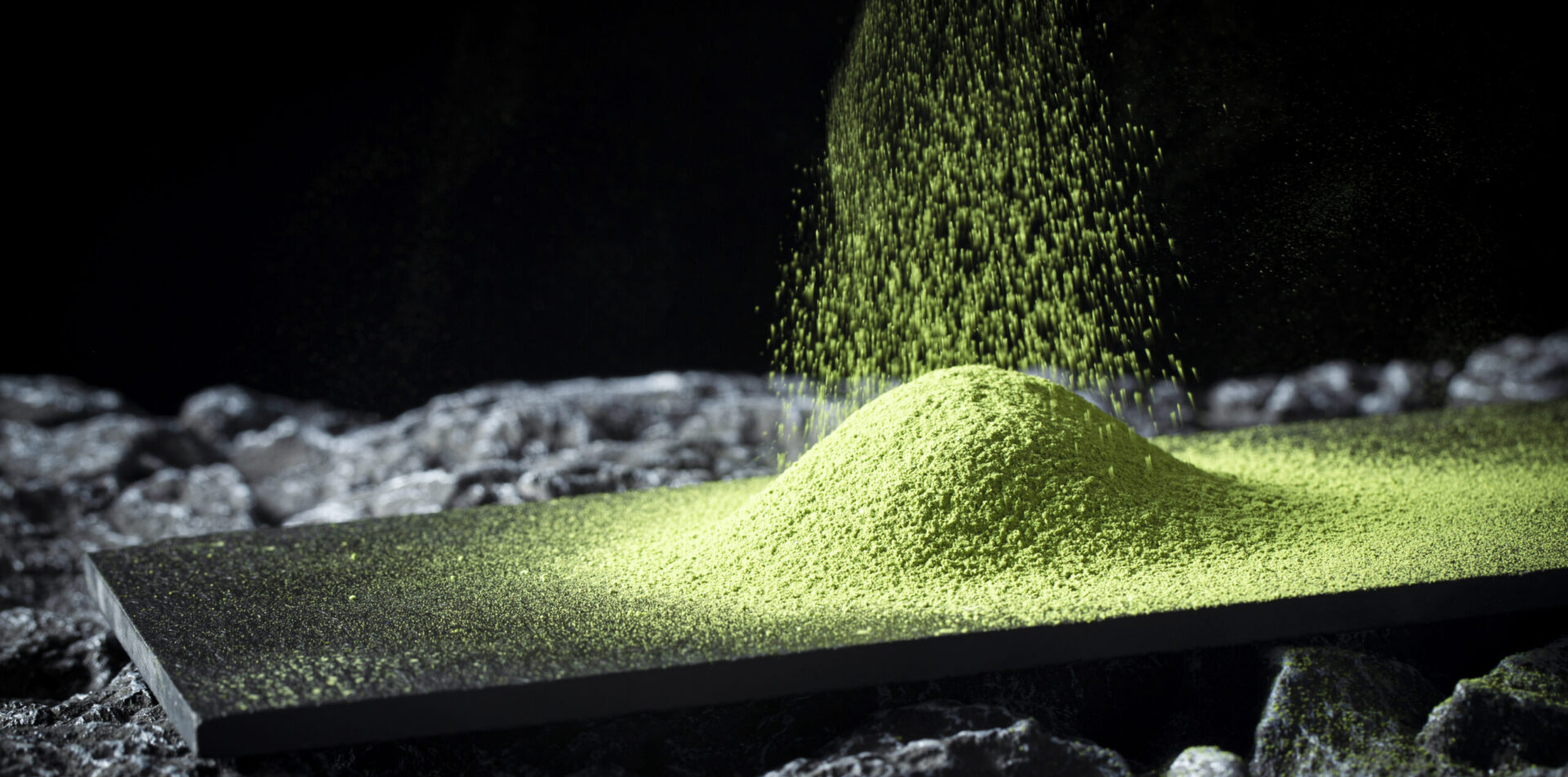
The “Kiyo” Quality
Japan accounts for 7% of the global green tea supply, of which 95% are consumed in Japan. Only 5% of that limited supply is exported. Through our privileged network of Japanese farmers and craftsmen, we differentiate ourselves from other tea suppliers by routinely curating a selection of extraordinary matcha from Japan’s domestic market to you. Kiyo matcha is better because we have to be – our farmers have a powerful legacy of craftsmanship and a prodigious reputation to uphold.
Our Bestsellers
We have a variety of matcha at different grades and price points.
-
Classic Grade Hatsumukashi Ceremonial Uji Matcha (1.4oz/40g)
Regular price $25.99 USDRegular priceUnit price / per -
Classic Grade Hatsumukashi Ceremonial Uji Matcha (3.5oz/100g)
Regular price $49.99 USDRegular priceUnit price / per -
Heritage Grade Densho Ceremonial Uji Matcha (1.4oz/40g)
Regular price $59.99 USDRegular priceUnit price / per -
Imperial Grade Tenryu Ceremonial Uji Matcha (1.4oz/40g)
Regular price $48.99 USDRegular priceUnit price / per -
Organic Classic Grade Chiba No Shiro Ceremonial Uji Matcha (1.4oz/40g)
Regular price $23.99 USDRegular priceUnit price / per -
Premium Grade Toyokage Ceremonial Uji Matcha (1.4oz/40g)
Regular price $34.99 USDRegular priceUnit price / per -
Ritual Grade Wakyo Ceremonial Uji Matcha (1.4oz/40g)
Regular price $39.99 USDRegular priceUnit price / per -
Signature Grade Shuga Ceremonial Uji Matcha (1.4oz/40g)
Regular price $29.99 USDRegular priceUnit price / per
Your Questions Answered
Why is your matcha so expensive?
Our matcha is carefully sourced and handpicked from the Uji region in Japan, which is renowned for its high-quality matcha. The cultivation process is rigorous and time-consuming, from shading the tea plants to carefully selecting and processing the young, tender leaves.
This results in a superior grade of matcha that is rich in flavor, nutrients, and antioxidants. Additionally, we prioritize fair compensation for our farmers and workers who uphold the traditional craftsmanship necessary to produce the best matcha. While our prices may be higher than some other brands, we believe that the quality and value of our matcha speak for themselves.
How do I prepare matcha?
Matcha can be prepared in a number of ways, but the most traditional method involves whisking 2g of powder with 90ml/3oz of hot water at 80°/170°Fto create a frothy, creamy beverage. There are many different tools and techniques for preparing matcha, so we recommend experimenting until you find the method that works best for you.
How much matcha should I use per serving?
We recommend using approximately 2 grams (or one teaspoon) of matcha per serving. However, this can vary depending on personal taste preferences and the specific recipe you are using.
What are the health benefits of matcha?
Matcha is a type of green tea that is packed with antioxidants and has been found to support liver health. What sets matcha apart from other types of green tea is its high concentration of chlorophyll, which gives it its vibrant green color. In fact, matcha has been found to have up to 137 times more antioxidants and 10 times more chlorophyll than regular green tea. Antioxidants help to protect the body from damage caused by harmful molecules called free radicals, while chlorophyll has been found to support liver health by removing toxins from the body.
Is there caffeine in matcha?
Yes, each serving contains a moderate amount of caffeine that can provide a gentle and sustained energy boost without the jitters or crashes associated with other sources of caffeine especially coffee. Matcha has less caffeine than coffee but provides a more sustained energy boost.
How should I store my matcha?
To preserve the freshness and flavor of your matcha, we recommend storing it in a cool, dry place away from direct sunlight. Once opened, matcha should be consumed within a few weeks for best results. Putting it in a fridge will keep your matcha fresh (and its umami taste) longer.


